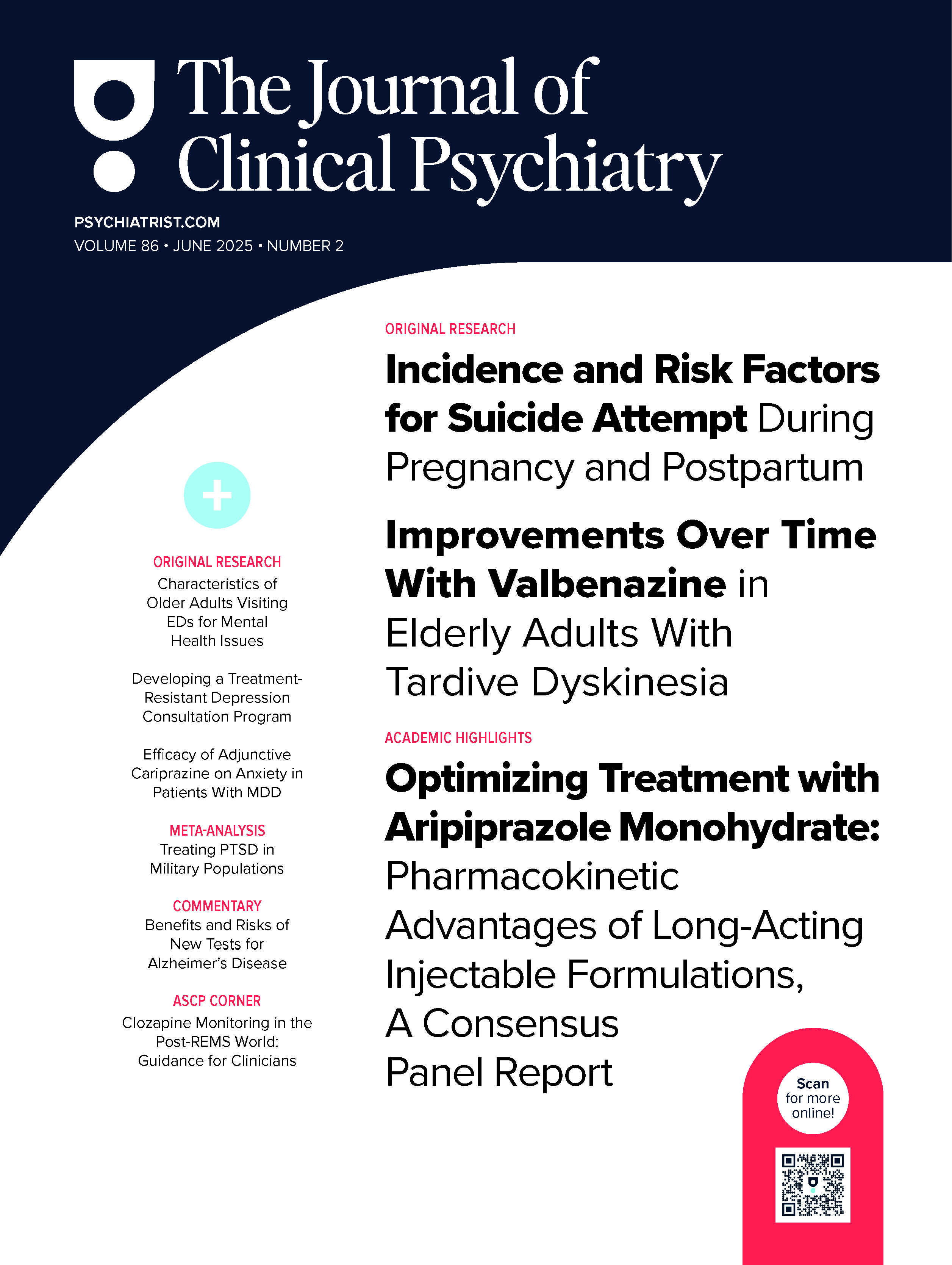Divalproex Sodium for the Treatment of Conduct Disorder: A Randomized Controlled Clinical Trial (original) (raw)
Original Research October 15, 2003
; Kirti Saxena, MD ; Maya L. Petersen, BA ; Sekou Ford, MD ; Zakee Matthews, MD
J Clin Psychiatry 2003;64(10):1183-1191
Article Abstract
**Background:**New treatments for conduct disorder are sorely needed. We aimed to test the efficacy of divalproex sodium for the treatment of conduct disorder.
Method: Seventy-one youths with conduct disorder according to DSM-IV criteria were enrolled in a randomized, controlled, 7-week clinical trial. Subjects were all adolescent males with at least 1 crime conviction. Subjects were randomized into high- and low-dose conditions and were openly managed by a clinical team. Subjects and independent outcome raters were blinded to condition. Clinical Global Impressions-Severity of Illness (CGI-S) and CGI-Improvement (CGI-I) ratings, Weinberger Adjustment Inventory ratings, and staff ratings of behavioral privilege were used to assess outcome.
Results: Intent-to-treat analyses showed significant associations between assignment to the high-dose condition and ratings on the CGI-S (p = .02) and CGI-I (p = .0008). Self-reported weekly impulse control was significantly better in the high-dose condition (p < .05), and association between improvement in self-restraint and treatment condition was of borderline statistical significance (p < .06). Parallel analyses comparing outcome by blood drug level achieved strengthened the results, as expected.
Conclusion: This preliminary study in a most difficult population suggests a role for divalproex sodium in the treatment of conduct disorder. Divalproex sodium improved self-reported impulse control and self-restraint, variables shown to be predictive of criminal recidivism. Studies are needed of longer-term impact and side-effect profiles. This is one of few controlled psychopharmacologic studies of conduct disorder.
Save
Cite
Vol 86 • 2025 • Number 2
